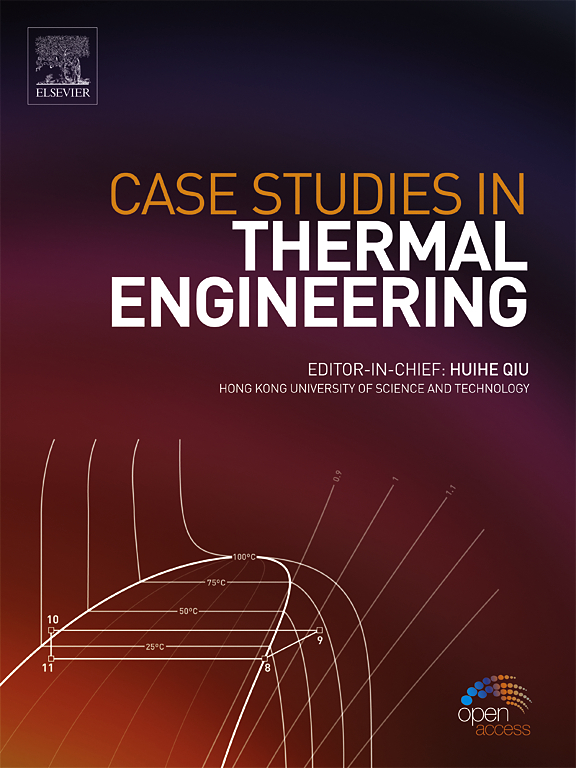基于多物理耦合模型的水合物储层微波辐射天线结构参数优化
IF 6.4
2区 工程技术
Q1 THERMODYNAMICS
引用次数: 0
摘要
微波加热已成为水合物开采领域一项前景广阔的技术,引起了人们的极大兴趣。本研究的重点是通过多物理耦合模型优化微波辐射天线的结构参数。随后通过实验结果对模型进行验证。然后建立微波辐射仿真模型,以评估天线的辐射性能,并阐明储层内的温度分布机制。优化后的结构具有角度为 75°、长度为 28 毫米的矩形槽。将这种优化的天线部署在半径为 1 米的水库中并加热 10 小时后,平均温度从 2 ℃ 上升到 7.11 ℃。此外,该设计还改善了天然气水合物储层内的热均匀性,使温度标准偏差达到 7.76 °C。加热后的均匀性表明微波分布有效。总之,这些结果证实了微波加热,特别是利用优化的天线时,能有效提高储层的显热,帮助水合物分解。本文章由计算机程序翻译,如有差异,请以英文原文为准。
Structural parameters optimization of microwave radiation antenna in hydrate reservoir based on multiphysical coupling model
Microwave heating has emerged as a promising technology in hydrate mining, attracting significant interest. This study focus on optimizing the structural parameters of microwave radiation antenna via a multiphysical coupling model. Subsequently the model is validated through experimental results. The microwave radiation simulation model is then developed to evaluate the antenna radiation performance and to elucidate the temperature distribution mechanism within the reservoir. The optimized structure features rectangle slots with an angle of 75° and a length of 28 mm. When this optimized antenna is deployed in a 1-m radius reservoir and heated for 10 h, it rises the average temperature from 2 °C to 7.11 °C. Moreover, the design improves the thermal uniformity within the gas hydrate reservoir, achieving a temperature standard deviation of 7.76 °C. Post-heating uniformity indicates effective microwave distribution. Overall, these results affirm that microwave heating, particularly when utilizing an optimized antenna, effectively enhances the reservoir's sensible heat and aids in hydrate decomposition.
求助全文
通过发布文献求助,成功后即可免费获取论文全文。
去求助
来源期刊

Case Studies in Thermal Engineering
Chemical Engineering-Fluid Flow and Transfer Processes
CiteScore
8.60
自引率
11.80%
发文量
812
审稿时长
76 days
期刊介绍:
Case Studies in Thermal Engineering provides a forum for the rapid publication of short, structured Case Studies in Thermal Engineering and related Short Communications. It provides an essential compendium of case studies for researchers and practitioners in the field of thermal engineering and others who are interested in aspects of thermal engineering cases that could affect other engineering processes. The journal not only publishes new and novel case studies, but also provides a forum for the publication of high quality descriptions of classic thermal engineering problems. The scope of the journal includes case studies of thermal engineering problems in components, devices and systems using existing experimental and numerical techniques in the areas of mechanical, aerospace, chemical, medical, thermal management for electronics, heat exchangers, regeneration, solar thermal energy, thermal storage, building energy conservation, and power generation. Case studies of thermal problems in other areas will also be considered.
 求助内容:
求助内容: 应助结果提醒方式:
应助结果提醒方式:


